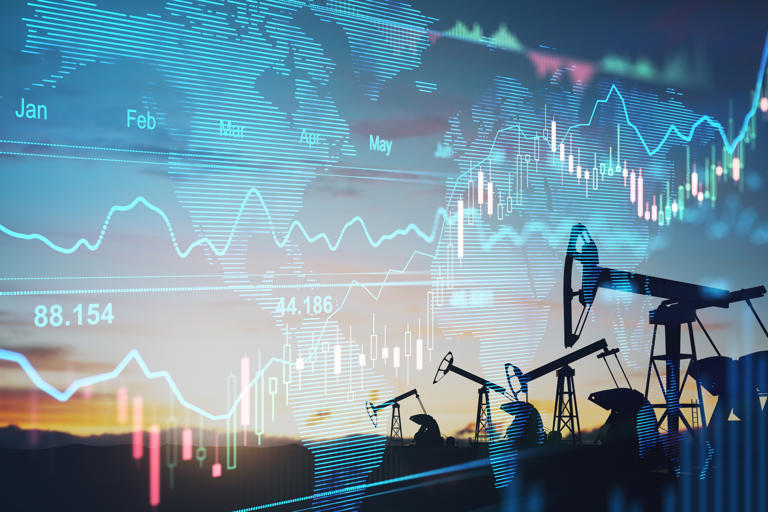Oil prices enter 2023 in the mid-$70s — around the same level they were at the start of 2022. However, they’ve been anything but stable over the past year. Crude oil soared to a peak in the $120s after Russia’s invaded Ukraine, but later receded on concerns that the global economy would slow down.
Read More:-What is gaslighting? Here’s what it is and how to respond to the behavior.
It’s anyone’s guess what will happen with oil prices this year. Some analysts expect oil to jump back into the triple digits, while others believe crude prices could head lower if there’s a recession. That uncertainty can make it hard to decide where in the energy sector to invest.
Read More:-15 Benefits of Facebook Marketplace for Business
However, some energy stocks can thrive no matter what happens with oil prices this year. Three that stand out to a few Fool.com contributors for their resiliency in any type of oil market are Enterprise Products Partners (NYSE: EPD), Enbridge (NYSE: ENB), and Chevron (NYSE: CVX).
I like to move it, move it
Reuben Gregg Brewer (Enterprise Products Partners): Profits in the upstream (oil production) and downstream (chemicals and refining) segments of the energy sector are heavily impacted by highly volatile oil and natural gas prices. The connector between the two, the midstream (pipelines) — not so much. That’s where Enterprise Products Partners operates, with a vast collection of North American pipelines, storage, processing, and transportation assets that would be virtually impossible to replace.
Read More:-Tesla Now Over 40% Cheaper in China Than US as Prices Cut Again
The underlying story here is that Enterprise charges fees for the use of its assets. The price of what’s flowing through its system can go up and down; it won’t materially change what the master limited partnership charges. That makes its cash flows highly stable over time and supports its hefty distribution yield — 7.8% at the current share price. Now, to be fair, that distribution will likely make up the lion’s share of investors’ returns here. But given the lofty figure, that will probably not be a problem for most income-focused investors.
Read More:-Tesla Now Over 40% Cheaper in China Than US as Prices Cut Again
Adding to the allure of those big quarterly checks is that Enterprise has increased its distributions for 24 consecutive years. And its distributable cash flow covered the payment by a generous 1.8 times in 2022’s third quarter. That suggests that the distribution is not only safe but has room to keep growing. Buttressing that belief is the $5.5 billion in capital spending the partnership has on the drawing board as it looks to expand its portfolio of vital infrastructure assets further.
Immune to oil price volatility
Read More:-15 Benefits of Facebook Marketplace for Business
Matt DiLallo (Enbridge): Enbridge operates a vast pipeline network that transports 30% of all the oil produced in North America. However, it doesn’t care about the price of the oil flowing through its pipes because it gets paid set fees for capacity on its system based on government-regulated rate structures or long-term, fixed-rate contracts. This business model enables it to generate highly stable cash flows regardless of oil prices.
That, in turn, gives it the funds to pay an attractive dividend that yields 6.7% at current share prices, and to invest in expansion projects. The company has a multibillion-dollar capital project backlog under construction, which gives it clear visibility into its future growth. Management expects Enbridge’s cash flow per share to expand at a 5% to 7% annual rate through at least 2024. Meanwhile, it has a growing list of projects to fuel growth beyond that time frame — projects that run the gamut from oil storage terminals to natural gas pipelines to offshore wind farms in Europe. The company also has a top-tier financial profile, including investment-grade credit with leverage at the low end of its target range, which will make it easier for it to fund its growth.
Enbridge’s growing cash flow should enable the company to continue increasing its dividend. The company recently gave investors a 3.2% raise for 2023, marking its 28th straight year of growing its dividend. That combination of income and growth should enable Enbridge to produce attractive total returns for its investors in any oil market environment.
Committed to shareholders
Neha Chamaria (Chevron): When playing oil prices for 2023, you have two options: If you fear prices will sink, you could play it “safe” by investing in midstream companies. Or, you could look at an upstream oil stock that would thrive if oil prices rise, but would prove relatively more resilient than its peers if oil prices fall. I see Chevron as being in that second category right now.
Chevron is expected to release its fourth-quarter and full-year numbers later this month, and it should report record cash flows for 2022. If oil prices rise further in 2023, Chevron should be able to make the most of that by boosting production.
If crude prices fall, however, Chevron should still be able to maintain its financial fortitude while rewarding shareholders with regular dividends thanks to all the cash it piled up and the debt it repaid in recent quarters. The third quarter, for example, was the sixth consecutive quarter during which Chevron reduced its debt levels — as of Sept. 30, the oil giant had brought its net debt ratio down to just 4.9%.
In fact, in the coming weeks, Chevron is expected to announce its 36th consecutive annual dividend hike. That should help the stock support its 3%-plus yield. On its Q3 earnings call, CEO Mike Wirth described the company as “well-positioned to deliver value to our shareholders in any environment,” and its steadily growing payouts certainly contribute to that. And if legendary investor Warren Buffett keeps increasing Berkshire Hathaway‘s Chevron stake, that could be another source of lift for this oil stock in 2023.







































